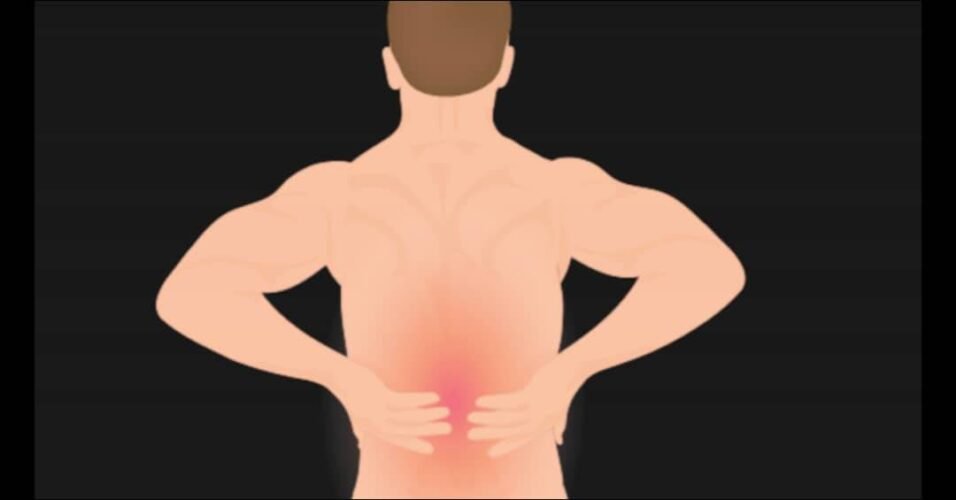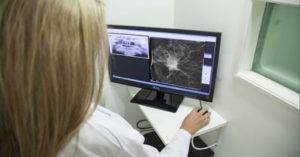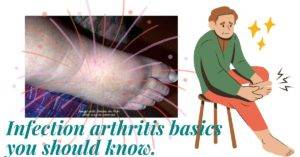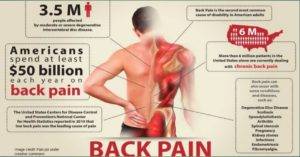
Table of Contents
The lower back is the most common site for arthritis in the spine often characterized by chronic pain and stiffness. Though there are several types of arthritis affecting this area, most cases are due to osteoarthritis involving a wear and tear process. It may also result from infections or autoimmune reactions.
Arthritis in the lower back may be diagnosed by the following medical procedures:
- Your medical history taking,
- A comprehensive physical examination,
- Blood work and laboratory tests following joint aspiration,
- X-rays,
- Computed tomography scans,
- Magnetic resonance imaging.
Common arthritis in the lower back.
The following are common diagnoses made in cases of arthritis in the lower back which is otherwise called spinal arthritis.
Osteoarthritis.
This is a mechanical wear and tear process of the cartilage in the spine that usually affects the facet joints. For this reason, it’s also called facet disease or facet arthritis. It may also be triggered by degeneration and thinning out of the intervertebral discs. This exacts greater friction on the facet joints thereby quickening the degeneration of these joints.
Spondyloarthritis.
This refers to several related inflammatory conditions affecting spinal joints and the points where ligaments and tendons insert into bones.1 The latter leads to a condition medically called enthesitis. Spondyloarthritis not only affects spinal joints but also nearby joints.
Depending on the affected joints, it could be called:
- Axial spondyloarthritis.
- Peripheral spondyloarthritis.
When it affects the spine and sacroiliac joints we call it axial spondyloarthritis but where it involves nearby joints it’s called peripheral spondyloarthritis.
Axial spondyloarthritis2 has two categories namely:
- Radiographic axial spondyloarthritis(r-axSpA) or ankylosing spondylitis(AS): Here the arthritic damage to the spinal and sacroiliac joints is visible on X-rays.
- Nonradiographic axial spondyloarthritis(nr-axSpA): The damage to the joints is not visible on x-rays but in Magnetic resonance images.
The following are some of the spondyloarthritis that may affect the lower back:
Psoriatic arthritis: This is a result of an autoimmune disease called psoriasis though only 30% of people with psoriasis come down with arthritis. Just as not everyone with psoriasis develops psoriatic arthritis, the spine is involved in only about 20% of cases of psoriatic arthritis.
Enteropathic arthritis: This form of arthritis is found in some people with a condition called inflammatory bowel disease. Only a few people with the disease develop arthritis. Not everyone with this arthritis sees it spread to the spine but when it does, it affects the sacroiliac joints.
Reactive arthritis: It is caused by the body’s immune reaction to infections in other parts of the body usually the urinary, gastrointestinal systems, or the genitals. Apart from the joints, it affects other organs in the body. Where it involves the spine, the sacroiliac joint is usually the target.
Antimicrobial therapy is ineffective in the treatment of this type of arthritis.3
What causes arthritis in the lower back?
Arthritis in your lower back could come in the form of any of the common arthritis mentioned earlier such as a wear and tear process like osteoarthritis, or due to spondyloarthritis conditions like psoriatic arthritis.
Arthritis in the lower back happens when any of these forms of arthritis spread to the spine. Osteoarthritis is by far the most common form affecting the spine.
The risk factors or causes of any of these forms of arthritis also apply as causative factors to spinal arthritis. These include your age, body mass index, gender, history of injury to the lower back, infection, etc.4
What does arthritis in the lower back feel like?
What you’ll feel depends on the type of arthritis and whether there is nerve involvement or not. Most of the feelings will be typical of symptoms of arthritis like a grinding sensation. Usually, there will be pain and stiffness in the lower back that makes you less tolerable to prolonged standing or sitting.
Though, not everyone with arthritis in the lower back feels this pain, and this has been proven according to a Journal of Orthopaedic Surgery.5 I have done physical examinations on people with advanced spinal arthritis as shown in their X-rays but who feel little to no pain. There are also people whose spinal arthritis starts with pain even while there is no radiological evidence of arthritis in their lower back.
Where there is nerve involvement the pain will become less centralized in the back as the condition worsens. You may begin to feel it at the buttocks as well from where it starts to spread further down to the knees and eventually to the side of your foot. It may result in tingling, numbness, or patchy sensation in some areas.
Depending on the type of arthritis, the stiffness and level of discomfort may ease with exercise but not when there is a flare-up.
Arthritis in the lower back symptoms.
The symptoms are mostly what you’ll expect in arthritis in addition to symptoms of nerve involvement. They include:
- Grinding sensation on movement,
- Pain,
- Burning sensation or feeling of soreness around the area,
- Reduced flexibility of the spine as a result of stiffness,
- Swelling over the affected area,
- Tenderness,
- Warmth on the lower back,
Where arthritis is associated with systemic inflammation, you’ll have some or most of these symptoms in other parts of your body besides fatigue, loss of appetite, or weight loss.
Rheumatoid arthritis in the lower back.
Rheumatoid arthritis may affect the synovial facet joints in the neck or cervical region but rarely affects the lower back. When it does it may worsen an already existing arthritis plus an increased risk of osteoporosis. Osteoporosis increases the risk of vertebral fractures by reducing bone mineral density.
Nonetheless, the drugs used in the treatment of rheumatoid arthritis could help relieve the symptoms of low back pain.
Stay in touch by signing up for our newsletter:
The best treatment for arthritis in the lower back.
Arthritis is incurable. Symptoms management is the ultimate goal, in addition to reaching a point of remission, and prevention of disease progression or further joint damage. The best treatment for arthritis in the lower back depends on a couple of factors such as:
- Type of arthritis,
- The severity of symptoms,
- Your age,
- Stage of the disease,
- Other medications you may already be taking, and
- Presence of other diseases or comorbidity.
For people whose arthritis is due to systemic inflammatory immune reaction, there is a comprehensive recommended treatment guideline by the European League Against Rheumatism (EULAR).
Usually, non-steroidal anti-inflammatory drugs and corticosteroids are the drugs of choice in managing arthritis. There are also non-pharmacological approaches like physical therapy, Homeopathy, Acupuncture, and natural means of management.
There is no one-size-fits-all about the best treatment for your arthritis in the lower back. The best should be determined by your healthcare provider after taking into consideration all the factors listed earlier that influence the choice of treatment.
Exercises for arthritis in the lower back.
Pain is the worst symptom of arthritis in the lower back. Exercise and stretching are good for this pain.6 As a result of the nature of the pathology, any exercise you do needs to be prescribed. It should be proven to be safe in your ideal situation.
Whatever exercise you may have to do, the objectives are similar and include the following:
- Reduction of Back pain,
- Reduction in stiffness or improved range of motion,
- Muscle Strengthening, and
- Improvement or restoration of physical function or independent living.
Some of the exercises known to help with your arthritis in the lower back are as follows:
Single knee to chest stretch.
This is meant to reduce stiffness and improve mobility or flexibility. Below are the steps:
- Lie supine or on your back with your face looking straight up towards the ceiling.
- Legs should be bent with feet flat on the ground,
- Gently place both hands firmly over any of your knees,
- See to it that your back is flat on the surface you are lying on and brace your abdominal muscles,
- Gently pull the knee you are holding towards your chest as shown below.
- Hold for about 20 to 30 seconds and release,
- Repeat with the other leg.
You may repeat this exercise 3 to 5 times for each leg but be gentle and watch out for how your arthritic lower back reacts to it. Stop, if it gets painful.
Double knee to chest stretch.
This is quite similar to the single-leg knee-to-chest stretch described above. However, you do it with both legs simultaneously as shown below, following the starting position as described in the single knee exercise.
Pelvic tilt.
It reduces stiffness and relieves pain. It is a milder exercise than either the single or double-leg knee-to-chest stretches.
- Start by lying supine with a neutral spine with eyes looking up at the ceiling,
- Legs should be slightly bent with feet flat on the surface you are lying,
- Arms could be placed right across your trunk or flat on the surface on which you are lying,
- Brace your tummy and push your lower back downwards such that the lumbar curvature is flattened with your lower back pressed against the surface you are lying,
- If done correctly, you should feel your pelvis tilted posteriorly,
- Relax your back and repeat a couple of times more.
Prayer stretch.
This has about the same effect on the lower back as the double knee-to-chest stretch but it’s done facing down rather than up.
- Start by assuming a four-point kneeling position with your body supported by your hands and knees,
- Gradually tilt backward with your buttocks descending to make contact with your heels.
- As you tilt, lower your trunk towards the floor and stretch out your hands fully in front of you as shown in the image below,
- Hold in that position for several seconds,
- With reverse movement, rise back up to rest on four points and repeat the process a couple of times more.
Apart from these, numerous other exercises could help relieve your symptoms like hip rocking. In it, you lie supine (on your back) with bent knees and feet flat on the ground as you do during the knee-to-chest stretch. Then you alternately turn both knees to the right and left thereby rocking your hips in the process.
Some of these exercises could hurt when done wrongly. It’s always better to have your healthcare provider select the right ones for you after a thorough evaluation.
Walking and arthritis in the lower back.
Research has shown walking and cycling to be beneficial for low back pain which could also result from arthritis.7 It’s a low-impact exercise that helps with flexibility and pain reduction while maximizing physical function. It has also been found to help reduce the onset of neck pain as covered in our neck arthritis article.
I have often recommended walking for patients with slipped intervertebral discs as it has shown to be highly beneficial in the long-term management of the condition. Some of them who wake up with pain report feeling much better after a morning walk.
Can a chiropractor help with arthritis in the lower back?
Chiropractors are among the group of professionals who evaluate and offer non-pharmacological alternatives to the treatment of arthritis in the lower back.
Their work often involves spinal conditions so when you talk about spinal arthritis in the lower back they are professionals anyone could go to for expert handling and guidance. This has been proven in research that shows you may get 3 times better outcomes with a chiropractor than with your primary care physician.8
What is the best medicine for arthritis in the lower back?
Just as the best treatment for your arthritis in the lower back is the recommendation of your healthcare provider, the best medicine follows in line with your physician’s recommendation. After the necessary history taking, physical assessment, medical imaging, and other diagnostic procedures, what you’ll get is likely the best medicine that suits your condition on an individual basis.
Medicines used in the management of arthritis include:
- Non-steroidal anti-inflammatory drugs,
- Glucocorticoids,
- Phosphodiesterase-4 inhibitors,
- Janus kinase inhibitors,
- Conventional and biologic disease-modifying anti-rheumatic drugs, etc.
Whereas some of these drugs are over-the-counter (OTC) medicines, many are prescription drugs that can only be given after confirmatory tests. Some that may work for some patients may not work for others so it’s never a one-size-fits-all situation.
The best drugs for you are those that achieve treatment objectives like the remission of symptoms and preventing further joint damage.
- Dougados, M., & Baeten, D. (2011). Spondyloarthritis. The Lancet, 377(9783), 2127-2137. https://doi.org/10.1016/S0140-6736(11)60071-8 ↩︎
- Sieper, J., & Poddubnyy, D. (2017). Axial spondyloarthritis. The Lancet, 390(10089), 73-84. https://doi.org/10.1016/S0140-6736(16)31591-4 ↩︎
- Wollheim, Frank A. MD, PhD, FRCP. Enteropathic arthritis: how do the joints talk with the gut?. Current Opinion in Rheumatology 13(4):p 305-309, July 2001. ↩︎
- Su, Charles A. MD, PhD∗; Kusin, David J. MD†; Li, Samuel Q. BA‡; Ahn, Uri M. MD§; Ahn, Nicholas U. MD∗. The Association Between Body Mass Index and the Prevalence, Severity, and Frequency of Low Back Pain: Data From the Osteoarthritis Initiative. SPINE 43(12):p 848-852, June 15, 2018. | DOI: 10.1097/BRS.0000000000002601 ↩︎
- K Horikawa, Y Kasai, T Yamakawa, A Sudo, A Uchida.(2006).Prevalence of osteoarthritis, osteoporotic
vertebral fractures, and spondylolisthesis
among the elderly in a Japanese village.Journal of Orthopaedic Surgery;14(1):9-12. Department of Orthopaedic Surgery, Faculty of Medicine, Mie University, Mie, Japan. https://journals.sagepub.com/doi/pdf/10.1177/230949900601400103 ↩︎ - Goode, A. P., Carey, T. S., & Jordan, J. M. (2013). Low Back Pain and Lumbar Spine Osteoarthritis: How Are They Related? Current Rheumatology Reports, 15(2), 305. https://doi.org/10.1007/s11926-012-0305-z ↩︎
- Shiri, R., Falah-Hassani, K., Heliövaara, M., Solovieva, S., Amiri, S., Lallukka, T., Burdorf, A., Husgafvel-Pursiainen, K., & Viikari-Juntura, E. (2019). Risk Factors for Low Back Pain: A Population-Based Longitudinal Study. Arthritis Care & Research, 71(2), 290-299. https://doi.org/10.1002/acr.23710 ↩︎
- Cherkin, D. C., & MacCornack, F. A. (1989). Patient evaluations of low back pain care from family physicians and chiropractors. Western Journal of Medicine, 150(3), 351-355. https://www.ncbi.nlm.nih.gov/pmc/articles/PMC1026476/ ↩︎































































































































































Everything is very open with a very clear description of the challenges. It was definitely informative. Your site is very useful. Thanks for sharing!
Detailed and useful post, sweet internet site, super design, very clean and pleasant user experience.
I will grab your rss feed right away as I can’t in finding your email subscription link or e-newsletter service. Do you’ve any? Please share it so that I can subscribe. Thanks.
You are a very smart individual!